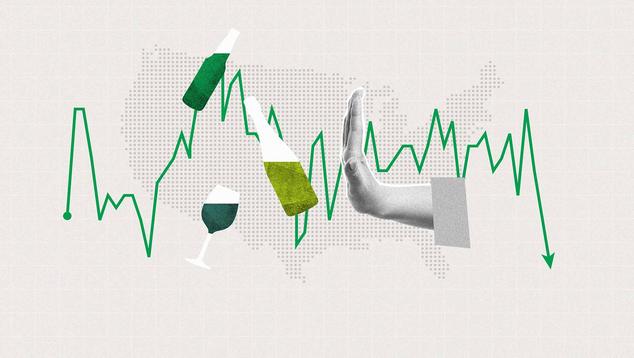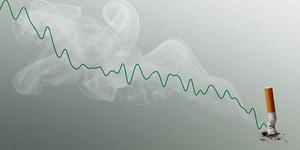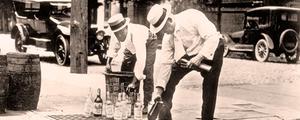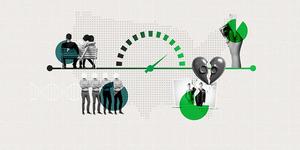Story Highlights
- Americans’ self-reported drinking down to 54% after consecutive declines
- Belief moderate drinking is bad for health rises to a new high of 53%
- Drinkers report drinking less, and less frequently
WASHINGTON, D.C. — The percentage of U.S. adults who say they consume alcohol has fallen to 54%, the lowest by one percentage point in Gallup’s nearly 90-year trend. This coincides with a growing belief among Americans that moderate alcohol consumption is bad for one’s health, now the majority view for the first time.
Gallup has tracked Americans’ drinking behavior since 1939 and their views of the health implications of moderate drinking since 2001. The latest results are from Gallup’s annual Consumption Habits survey, conducted July 7-21.
Record-Low 54% Say They Consume Alcohol
From 1997 to 2023, at least 60% of Americans reported drinking alcohol. The figure fell to 62% in 2023 and to 58% in 2024, before reaching 54% today. Prior to the most recent poll, the rate has been under 60% fewer than 10 times, including 58% in the initial 1939 poll and a one-time low of 55% recorded in 1958. The highs of 68% to 71% were all recorded between 1974 and 1981.
The consecutive declines in Americans’ reported drinking the past few years are unmatched in Gallup’s trend and coincide with recent research indicating that any level of alcohol consumption may negatively affect health. This has been a sharp reversal from previous recommendations that moderate drinking could offer some protective benefits.
Using 2023's 62% as a baseline (because the 2022 reading of 67% is an outlier), the decline in drinking has been more pronounced among women (down 11 percentage points since 2023, to 51%) than among men (down five points, to 57%).
Drinking has also declined 11 points among non-Hispanic White adults, while it has been fairly steady at around 50% among people of color.
Young adults had already become less likely to report drinking alcohol a decade ago, but that trend has only accelerated, with the rate falling from 59% in 2023 to 50% today. This puts their drinking rate below that of middle-aged and older adults, although fewer in those groups are also claiming to drink than did so two years ago.
There has been little difference in recent decades in the percentages of partisans saying they drink alcohol, but that has changed over the past two years, with a sharp drop in reported drinking among Republicans (falling 19 points, to 46%) but not Democrats (holding fairly steady at 61%).
Declines in alcohol consumption do not appear to be caused by people shifting to other mood-altering substances — in particular, recreational marijuana, which is now legal in about half of U.S. states. Although marijuana use is higher today than a decade ago, it has been fairly steady over the past four years and thus doesn’t appear to be a factor in people choosing not to drink alcohol.
Majority Now Say Drinking in Moderation Is Bad for Health
For the first time in Gallup’s trend, a majority of Americans, 53%, say drinking in moderation, or “one or two drinks a day,” is bad for one’s health. Just 6% say it’s good for one’s health, while 37% believe it makes no difference. Today’s belief that moderate alcohol consumption is unhealthy follows increases from 28% in 2018 and 39% in 2023 to 45% a year ago. By contrast, from 2001 through 2011, the percentage with this view hovered near 25%, roughly equal to those who considered drinking beneficial.
Consistent with the decline in young adults’ already lower use of alcohol over the past decade, this age group has also been the most likely to believe drinking is bad for one’s health.
In 2001, about 30% of young adults and middle-aged adults saw moderate drinking as harmful, while 21% of older adults agreed. However, by 2007, 18- to 34-year-olds had pulled ahead of both other age groups in their concern, including a recent surge to about two-thirds saying moderate drinking is harmful. Middle-aged and older adults’ belief that drinking is bad for health has picked up over the past few readings but still lags young adults’.
Additionally, women are more likely than men to view moderate drinking as unhealthy (60% vs. 47%, respectively), and Democrats (58%) and independents (55%) are more likely than Republicans (44%) to espouse this view. There are only slight differences by race/ethnicity, education and income.
Those Who Drink Report Drinking Less
Among Americans who do drink, consumption patterns are shifting. A record-low 24% of drinkers say they had a drink in the past 24 hours, while 40% say it has been more than a week since they last consumed alcohol, the highest percentage since 2000.
Factoring in all drinkers, including those who did not drink in the past week, the average number of drinks consumed over the past seven days is 2.8, the lowest figure Gallup has recorded since 1996. This is down from 3.8 drinks a year ago and closer to 4.0 drinks over the seven years prior to that. The highest average number since Gallup has tracked this is 5.1 drinks per week, recorded in 2003.
Adults who think moderate drinking is bad for one’s health are just as likely as all others to report they drink alcohol (55% and 54%, respectively). However, only half of those who harbor health-related concerns say they have had a drink within the past seven days (49%), compared with 69% of those who don’t share these health concerns.
Also, among those who did drink in the past week, the concerned group reports having fewer drinks, on average, than the non-concerned group (4.5 drinks vs. 6.4).
Beer Still Most Preferred Alcohol, but Gender Gaps Persist
U.S. drinkers continue to cite beer as the alcoholic beverage they consume most often, exceeding the 30% who name liquor and 29% who name wine. This is broadly consistent with the patterns seen over the past six years, when liquor has roughly matched wine as people's drink of choice.
Before 2019, liquor ranked last in popularity, while the proportions preferring wine and beer varied, but with beer usually leading.
As is typical, people’s preferred alcoholic beverage differs sharply by gender, with men far more likely than women to reach for a beer (52% vs. 23%) and women more likely than men to choose wine (44% vs. 14%). Men and women are about equally likely to opt for liquor (29% and 32%, respectively). There are modest differences by age, with young and middle-aged adults more likely than those aged 55 and older to prefer beer, and young adults being the least likely to favor wine.
Bottom Line
Americans' drinking habits are shifting amid the medical world’s reappraisal of alcohol’s health effects. After decades of relative steadiness in the proportion of U.S. adults who drink, Gallup has documented three consecutive years of decline in the U.S. drinking rate as research supporting the “no amount of alcohol is safe” message mounts. Compounding the challenge for companies that sell alcohol, drinkers now appear to be dialing back how much they drink, as well.
Young adults were initially quicker than older Americans to embrace the idea that drinking is detrimental, possibly because they hadn’t been as exposed to earlier advice that moderate drinking, particularly wine, is heart-healthy. But the belief that drinking is detrimental is now gaining traction with older adults.
The continuation of these trends may hinge on whether recent pronouncements about drinking’s risks are the final word on the subject, similar to how the U.S. surgeon general’s warnings about tobacco in the 1960s marked the start of a long-term decline in smoking. The trajectory of U.S. drinking could also depend on how much doctors, health authorities and policymakers reinforce the message that no amount of alcohol is risk-free.
Stay up to date with the latest insights by following @Gallup on X and on Instagram.
Learn more about how the Gallup Poll Social Series works. View complete question responses and trends (PDF download).




